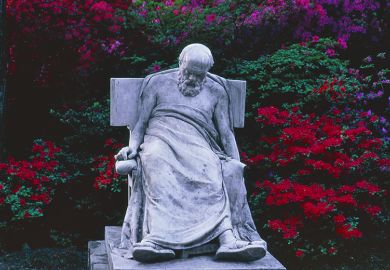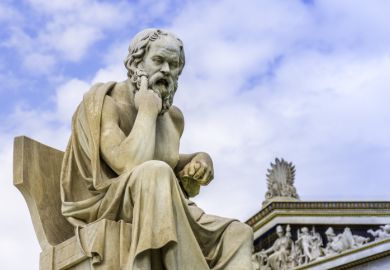There is no avoiding the fact that this is technical philosophy. But such is John Searle's skill as a teacher that nothing in it is inaccessible. And so wily an entertainer is he (one critic has called him "the king of American stand-up philosophers") that his demands on our attention are embraced.
He makes us want to know the answer to his question: how can there be rational decision-making in a world where everything occurs as a result of brute, blind, natural causal forces? Because of "the gap".
His book is a sustained attack on the classical model of rationality, in which rational action is directly caused by an agent's beliefs and desires. Searle insists there is a gap between the "causes" of an action in the form of beliefs and desires and the "effect" in the form of the action. This gap is "the freedom of the will". But still the doubt remains: could our sense of choice be an illusion? Yes, Searle admits, it could. The psychological experience of a gap does not guarantee a corresponding gap in the causal brain processes that underlie our mental states.
Watching Searle wrestle with this problem in the final chapter is the most interesting aspect of the book. Much of the rest is a reworking of well-worn themes from his earlier writings. For instance, his case depends on arguing for an intrinsic connection between fact and value, usually expressed by affirming that an "ought" can be derived from an "is". This was the subject of his first published paper some 40 years ago. Another central plank of his argument relates to the nature of speech acts - the topic on which he built his early reputation before turning to the philosophy of mind.
So to the big question. Searle is a materialist, whose best-known slogan is "brains cause minds". He also believes in the reality of free will - without it there would be no evolutionary advantage to being a conscious organism. So where can he find a gap in the causally closed physical universe, of which the brain is a part, that corresponds with the psychological gap essential to free will and rational action?
First he abandons the usual libertarian attempt to place the gap between a given mental state and its associated physical brain state. He accepts that at any time, "t1", the total conscious (that is, mental) state of the brain is determined entirely by the behaviour of its physical atoms and molecules and cells. He also abandons the normal materialist assumption that the physical brain state at time t1 is causally sufficient to determine the state of the brain at some later time, "t2". In other words he places the gap not between the mental and physical states at a single time, but between the total brain states at times t1 and t2.
Searle asserts the existence of a conscious self, a feature of the whole system, that chooses one among various reasons for action at t1, thus making it the cause of the situation at t2. He admits this does not solve the problem of free will, but claims it is an improved statement of the problem, and one that indicates "the most likely lines" of its solution.
Anthony Freeman is managing editor, Journal of Consciousness Studies .
Rationality in Action
Author - John R. Searle
ISBN - 0 262 19463 5
Publisher - MIT Press
Price - £23.95
Pages - 303
Register to continue
Why register?
- Registration is free and only takes a moment
- Once registered, you can read 3 articles a month
- Sign up for our newsletter
Subscribe
Or subscribe for unlimited access to:
- Unlimited access to news, views, insights & reviews
- Digital editions
- Digital access to THE’s university and college rankings analysis
Already registered or a current subscriber?



